This page contains affiliate links. If you purchase materials from one of the links, Habitot will receive a small commission at no extra cost to you. Thank you!
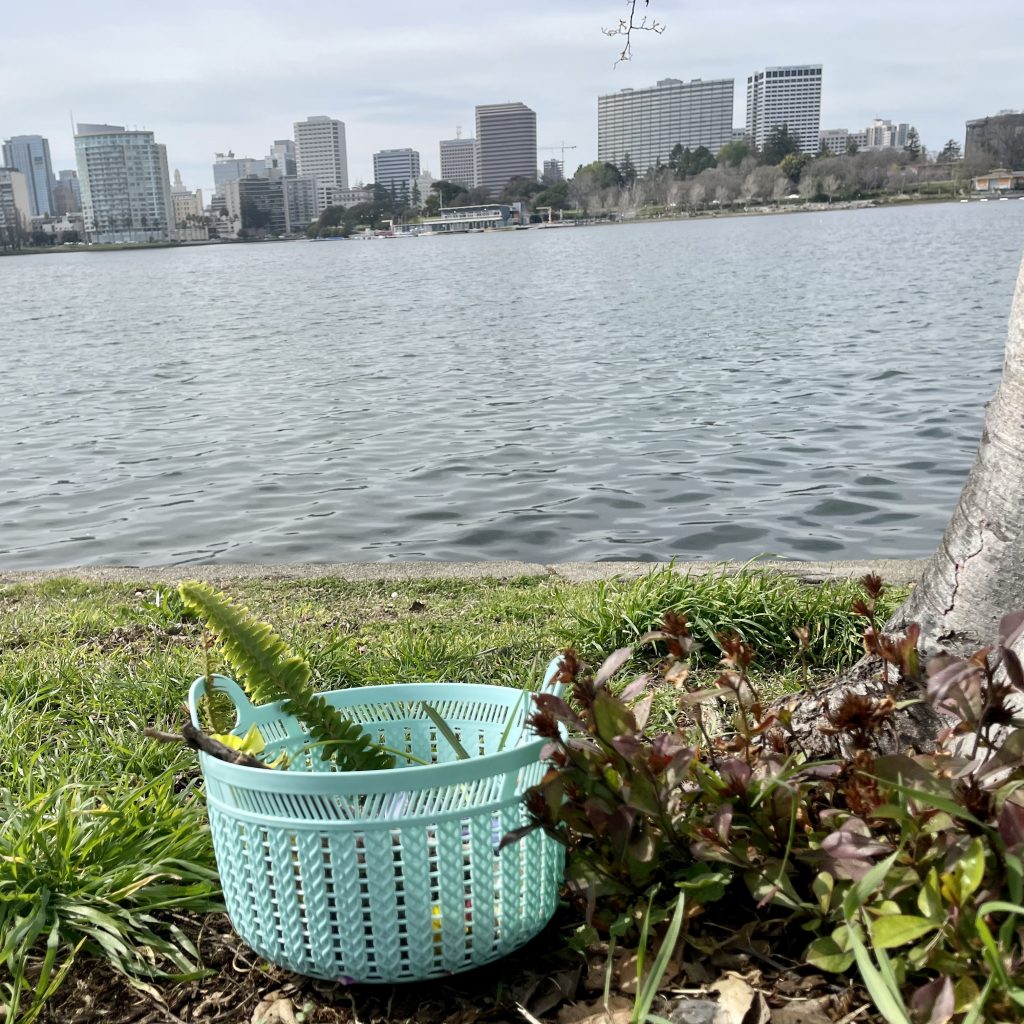
Nature Walk: Painting with Natural Materials!
Spring is around the corner! As the weather warms up, leaves come out and flowers start to bloom. This week’s Habitot-at-Home activity takes us outside on a nature walk to collect grasses, leaves, sticks, rocks, and flowers for painting and drawing.
Humans have collected plants for their pigments and rocks and sticks for their minerals for art-making for thousands of years. Please ask for permission to collect from private property (that’s not your own), and remember: no collecting is permitted in regional parks. Here’s a list of endangered plants in CA that may not be collected. Interestingly, there are no laws prohibiting the collection of California poppies (the California state flower) as long as they are on private property.
Skills We’re Learning
- Fine motor skills — developing small muscles in the hands for writing and holding utensils
- Observation and appreciation — noticing and respecting nature
- Trial and error — working with a variety of materials to see how they’re different
- Creativity — self-expression through painting and drawing
- Color identification — learning that colors can have many shades
- Physical development — walking and fresh air build strong bodies
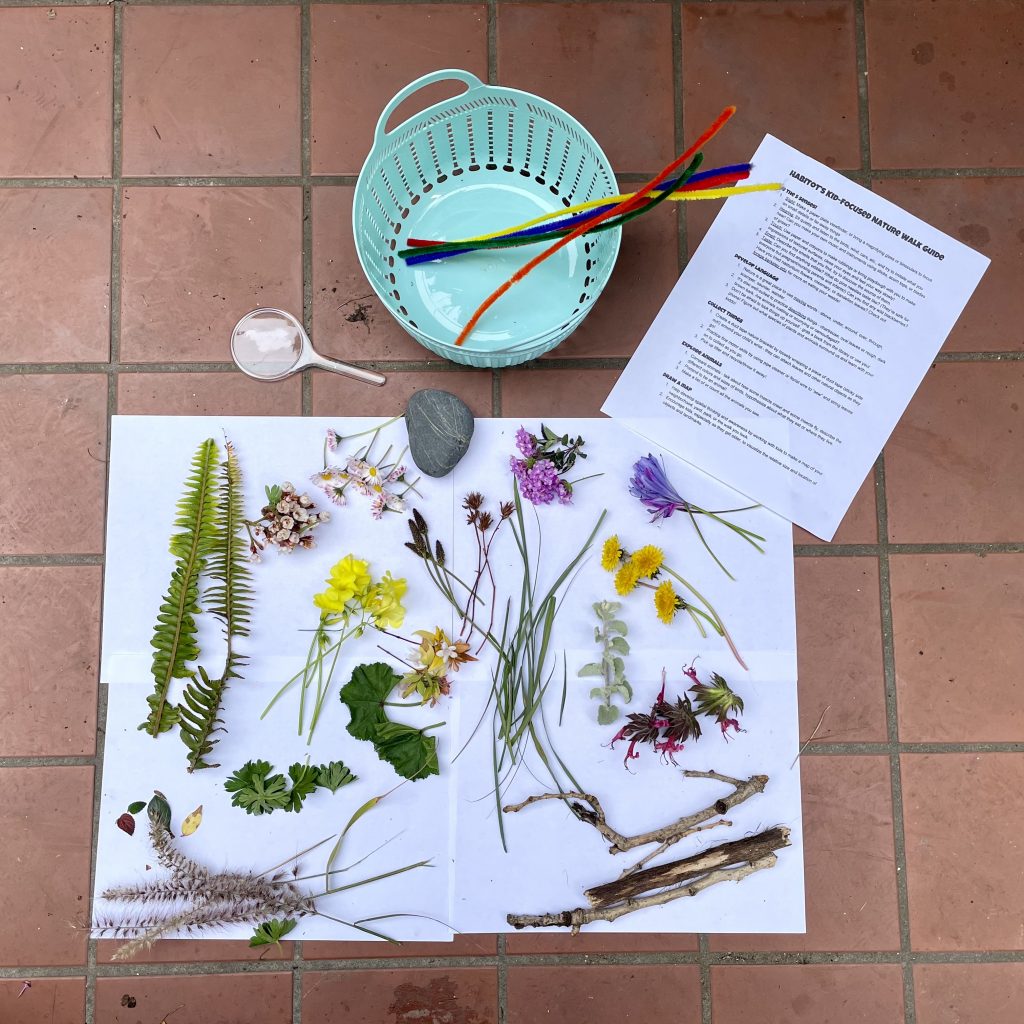
Nature Walk Materials
- Bag, basket, box, backpack, or large pockets for collecting materials
- Habitot’s Kid-Focused Nature Walk Guide
Art Materials
- Sturdy paper or card stock
- Small bowls/containers for making your own natural paint
- Paintbrush(es)
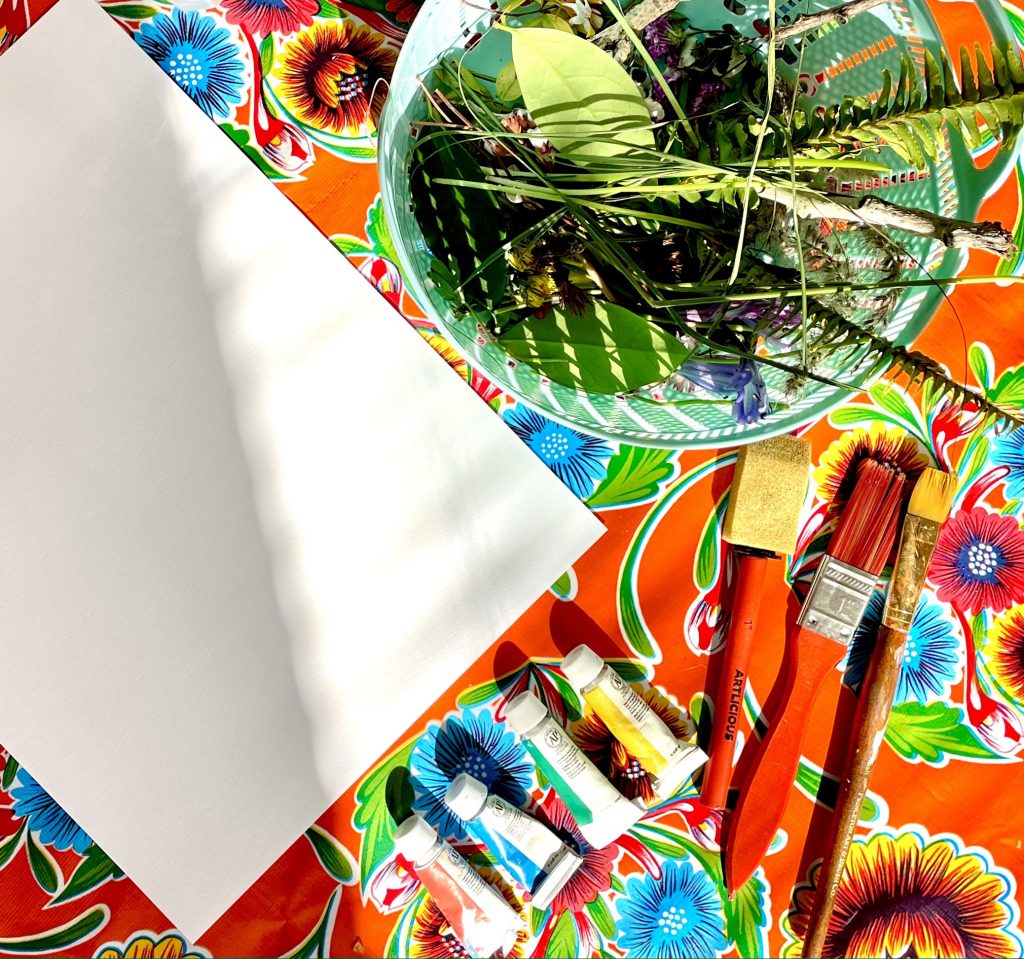
Optional Materials
- A magnifying glass
- A cell phone to take pictures of plants
- Duct tape
- Pipe cleaners or shoe lace
- Nontoxic, liquid watercolors or other nontoxic washable paint
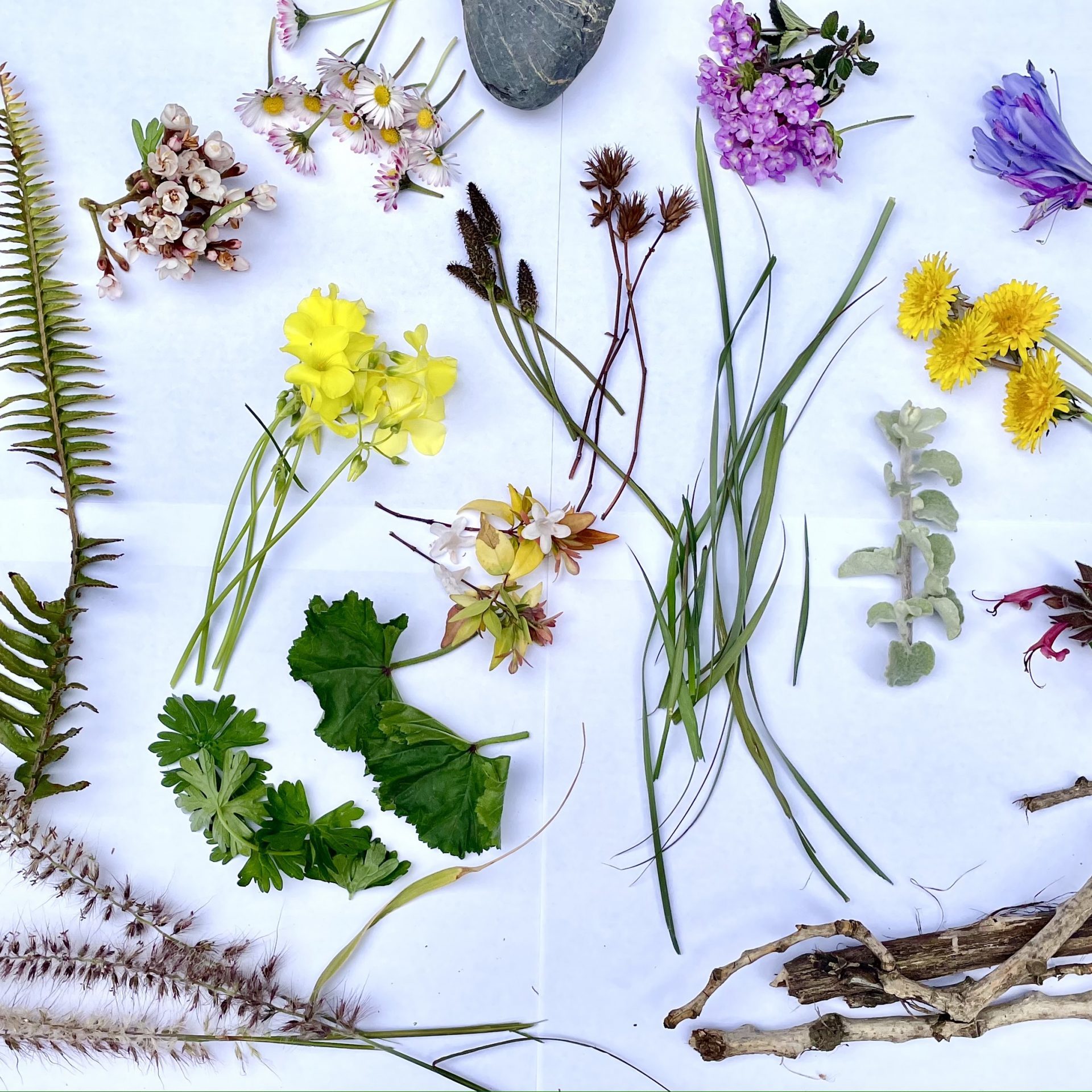
Collecting Fresh Grass and Flowers for Painting
It’s time to collect some natural materials! We took a short walk near Lake Merritt, but natural materials are all around us, in our neighborhoods, parks, in sidewalk cracks, and even right outside your doorstep.
During your nature walk, hunt for moist grass, leaves, and brightly colored wildflowers. Dandelions and weeds work well too!
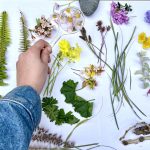
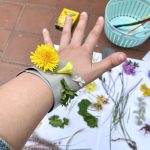
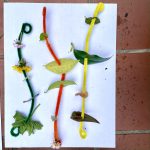
Encourage your children to use all five senses: seeing, hearing, touching, smelling, and tasting — yes, even tasting edible weeds. See Habitot’s Kid-focused Nature Walk Guide for more suggestions about how children can use their five senses on a nature walk.
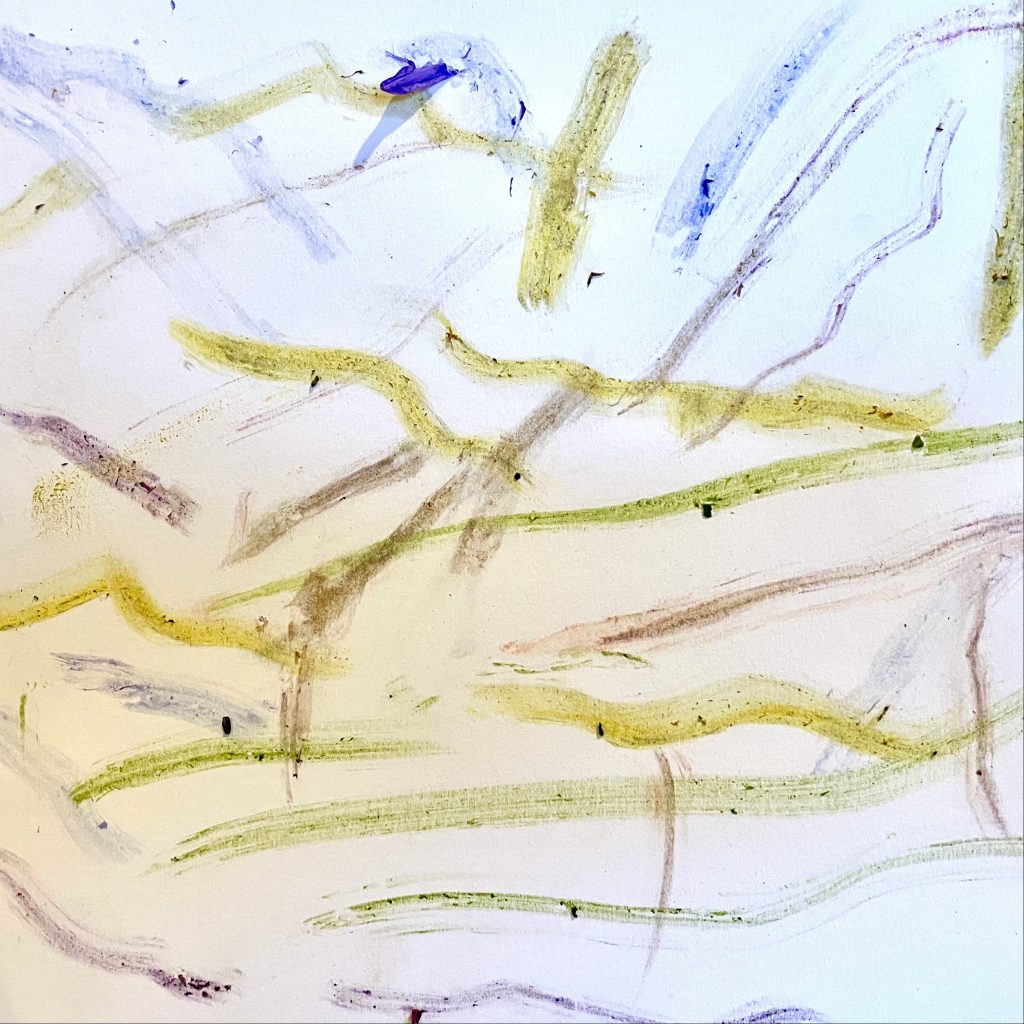
Painting with Fresh Grass and Flowers
Once you’ve finished collecting natural materials on your nature walk, here’s how to turn them into art materials at home:
- Set up a painting station with sturdy paper or card stock and a paintbrush.
- Ask your child to smudge the fresh grass, flowers, leaves, or other natural materials onto and across the paper so they can see how the colors of the plants transfer. The picture to the left was made by rubbing grass, dandelions, and small, brightly colored purple flowers onto the paper.
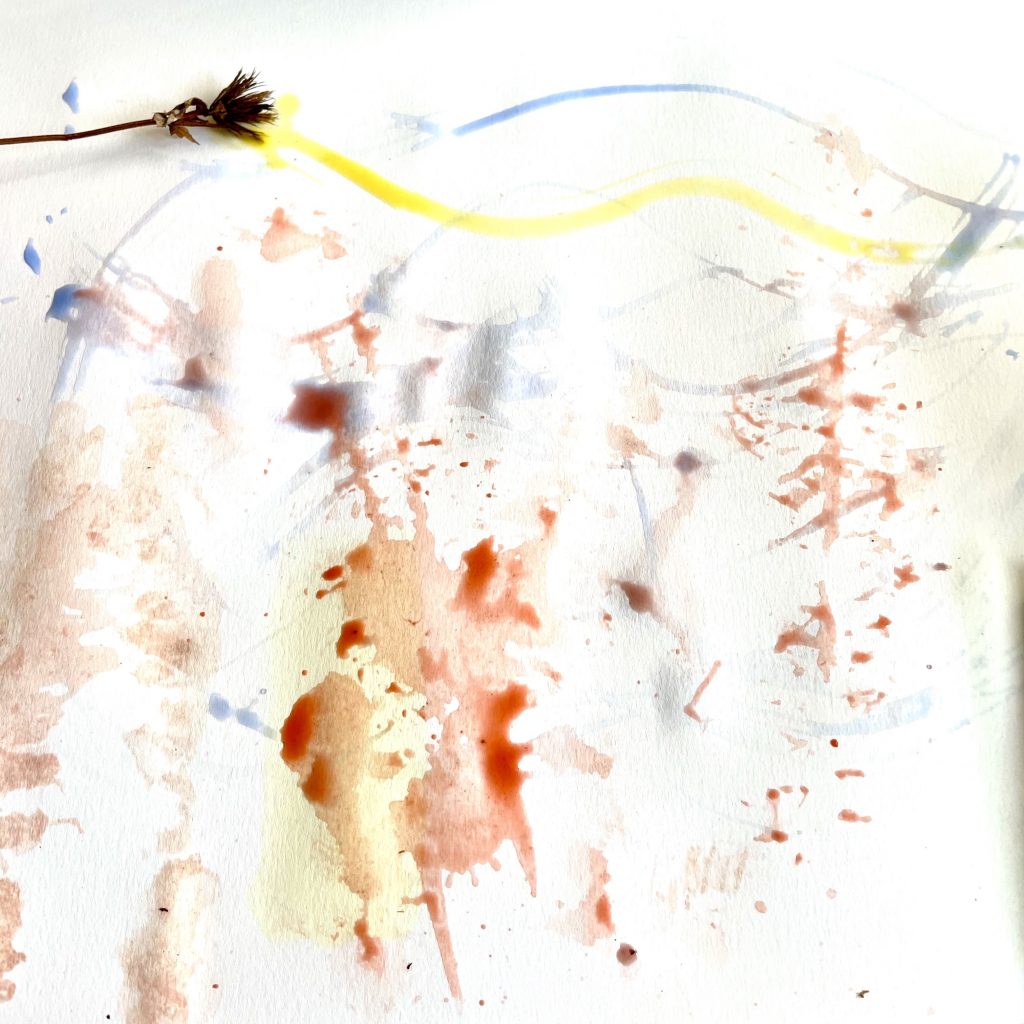
3. If you have washable watercolors or tempera paint, you can also use flowers and leaves as paintbrushes.
4. Children can paint directly onto flowers and leaves, then press the painted sides onto paper to make imprints.
5. Leaves and some flowers can also be used as stencils. Put tape on the back sides, then press them onto paper in any arrangement. Use watercolor, tempera, crayons, or chalk to color on top of the leaves and flowers. When dry, remove the leaves and flowers to see the shapes they’ve left behind.
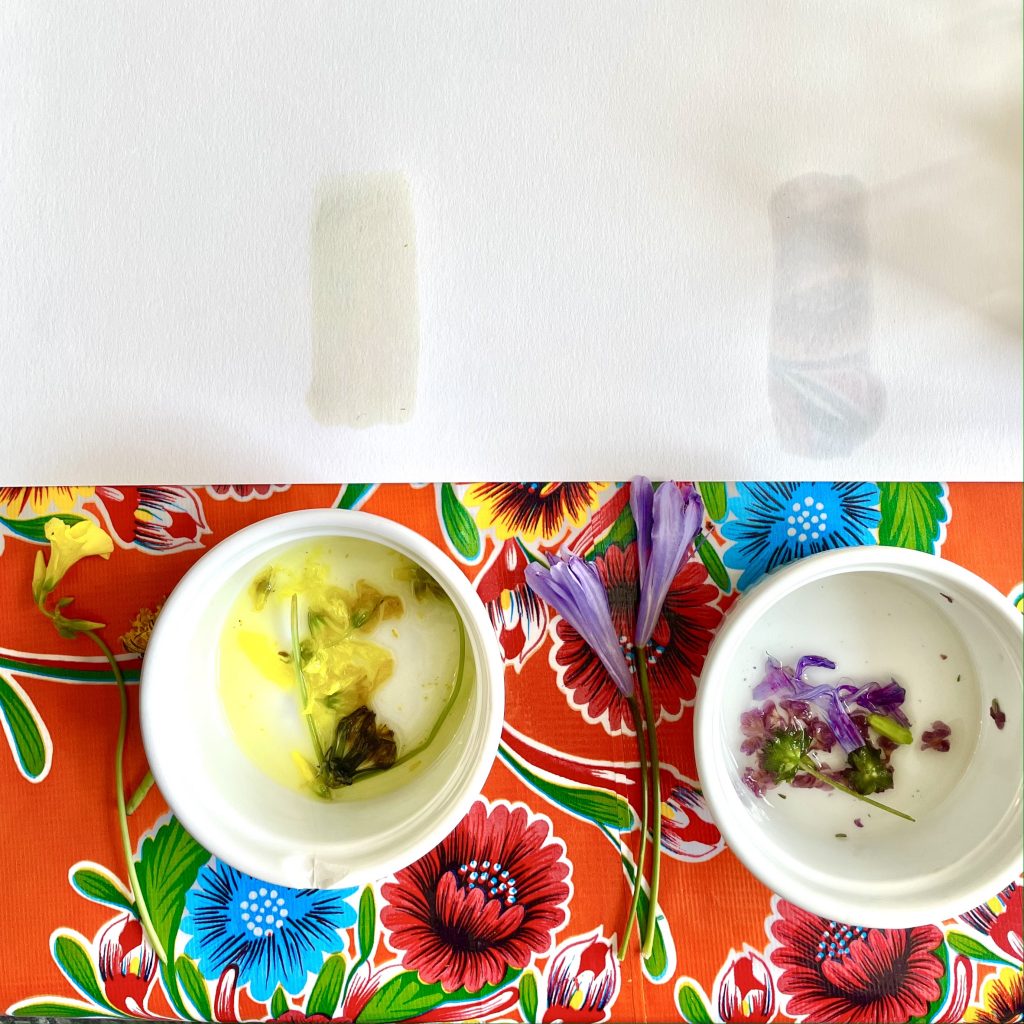
6. If you don’t have watercolors or tempera paint, you can make your own non-toxic natural paint!
Invite your child to crush the brightly colored flowers and/or grasses that you’ve collected. Then (and this part’s just for you, the adult, to do) add boiling water. More details for this recipe here!
Now, use a paintbrush to paint your homemade paint onto the paper. You may notice that this paint isn’t as bright as store-bought paint. Here’s a chance to discuss how colors have many different shades.
Happy making and exploring!
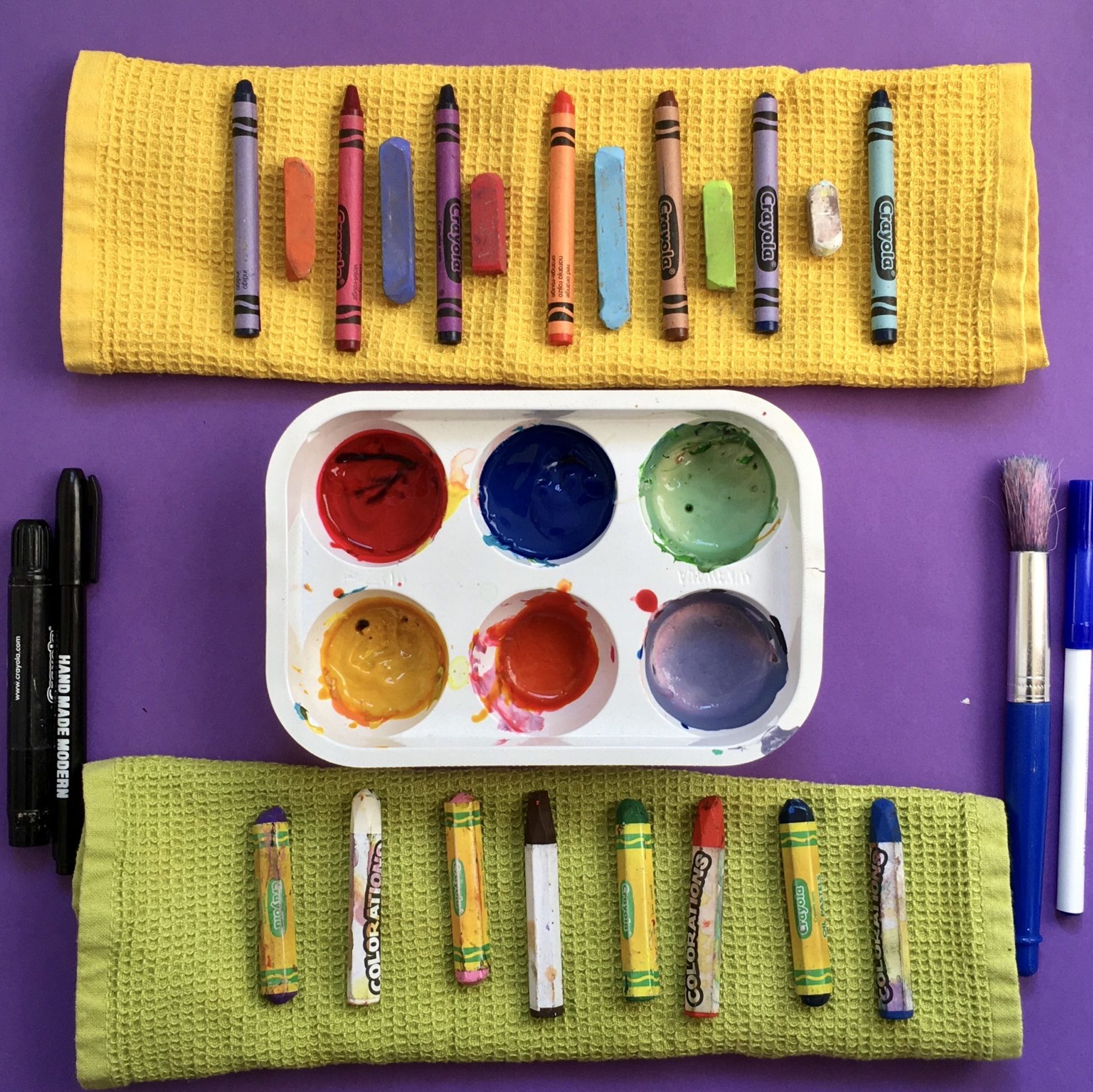
6 Question Survey
Your feedback will guide our future activities!
Has your family done a Habitot-at-Home activity? We have 6 quick questions for you.
Give Feedback here. Thanks!

